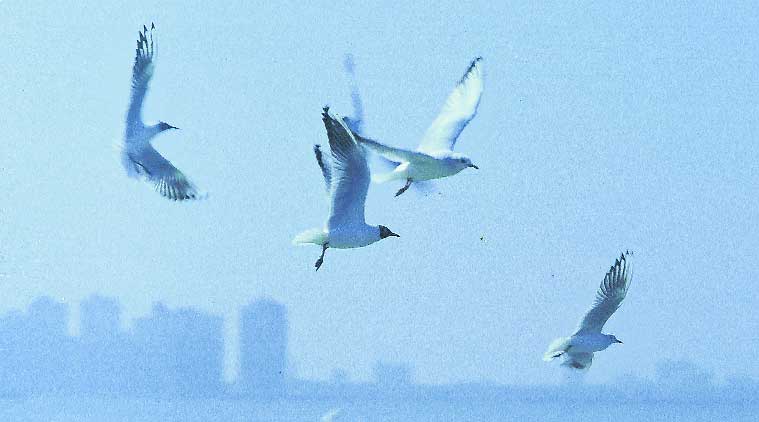Gulls are great subjects for flight photography
So, armed with a short 135 mm lens on a hefty Russian SLR, I would take myself off to a spot on Marine Drive where the birds came.
 With their languid grace and ease, gulls are great subjects for flight photography
With their languid grace and ease, gulls are great subjects for flight photography
Way back in the late Seventies, when I had just started photography and bird watching, one of the challenges I faced (inspired no doubt by Jonathan Livingstone Seagull), was the flight photography of birds. And happily every winter, flocks of seagulls would fly down to Bombay (where I was then living), giving me ample opportunity to try my luck.
So, armed with a short 135 mm lens on a hefty Russian SLR, I would take myself off to a spot on Marine Drive where the birds came, drawn by breadcrumbs and tidbits thrown to them by the public. This spot was bang opposite a working women’s hostel and I can only thank my stars that Bombay havaldars in those days, minded their own business and let you mind yours. You can well imagine what would happen today if a cop happened by…
“Kya kar rahe ho? What are you
doing?”
“I’m looking at gulls, photographing gulls!”
“‘Abbe saala, sharam nahin aati hai, chhokri dekh raha hai, photo le raha hai! Chal thane! (Looking at girls! Photographing girls! Aren’t you ashamed — come to the police station!)”
Here in Delhi, too, flocks of seagulls fly down to the river every winter and are treated to the finest namkeen by people on the river banks or on the pontoon bridges every morning. They have learnt to come when called: bobbing snugly in mid-river, they take off in a blizzard of white wings and head for the bridges as the first “Aao-aao!” calls ring out. There is alas, nothing Jonathan Livingstone Seagull about their behaviour. Usually a disgraceful scrimmage breaks out as they attempt to snatch tidbits from each other, jinking and twisting dexterously in mid-air, catcalling all the while. Once satiated, they will ignore further calls.
These are usually black or brown-headed gulls, both of which, in winter, sport white heads. Their plumage is generally pearl grey above and white below. You can still tell them apart though: brown-headed gulls have white “wing mirrors” at the ends of black-tipped primaries, black-headed gulls are smaller and have pure white leading edges to their wings. Around mid-February, their heads will have started turning black or coffee-brown, making them easier to identify. Sometimes, they may be joined by a lone patrolling Pallas’s gull (great black-headed gull), which is much larger, lanky winged, and flies with malevolent intent. There is indeed, something implacable about gulls, a glacial hardness in their eyes and mannerisms — no quarter will be given or asked if you get into an argument over a sardine with them. They breed in Ladakh and regions north of it and spend the winter on water-bodies and coastal regions all across the country.
Gulls worldwide have become prime scavengers — and as we throw away so much perfectly good food — are doing very well indeed. They haunt garbage dumps of big cities and mob fishing docks as catches are unloaded, and follow boats as they trawl the seas. They do make great subjects for flight photography — especially in black and white — as they beat their wings with a languid grace and ease — until they decide to challenge your skills by swerving and skidding, stalling, diving and tumbling all over the place. Here one moment gone the next: Just like Jonathan…
Ranjit Lal is an author, environmentalist and bird watcher





- 01
- 02
- 03
- 04
- 05






















